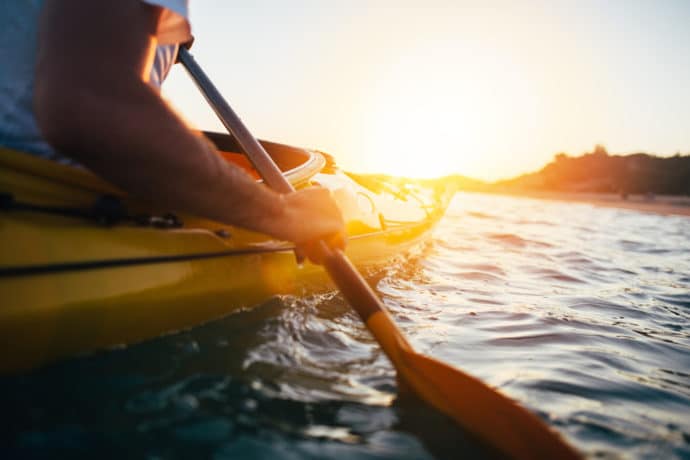Everything is bigger in Texas and that can definitely be said about our state’s aquatic resources. Our large state contains 3,700 named streams and 15 major rivers, which eventually flow into seven estuaries. These waterways support more than 200 reservoirs and provide nutrients and habitat for countless fish and wildlife. They also provide a great opportunity for recreational activities for millions of Texans each year. One of the best ways to explore the Texas waterways is by kayak or canoe. There are currently 74 official Texas Paddling Trails, which provide maintained access to rivers, creeks, lakes, ponds, bayous, and bays, with more in the works.
Kayak or Canoe?
Deciding to use a kayak or canoe is generally determined by your personal preference and what the water conditions are like where you will be paddling. The main differences between the two types of watercraft are in the cockpit, seat, and paddle. Canoes are spacious and open, while kayaks have closed cockpits for the paddler to sit in, although open-top options are also popular. In a canoe, you sit on a bench-like seat, raised off the boat floor, whereas in a kayak you sit much lower, typically on a seat molded into the bottom of the kayak. The other main difference is the paddle; a canoe paddle is single-bladed and you use it on either side of the canoe, while kayakers use double paddles to move through the water. The main types of canoes are recreational, whitewater, and racing and the main types of kayaks are recreational, whitewater, touring, sit-on-top, inflatable, and racing.
The best boat for you depends on your agenda. Think about where you will be paddling the most, who will be with you, how long you want your excursions to be, and how you will be transporting your boat. Canoes are great for carrying lots of gear and are more stable than kayaks. You can stretch out your legs and stand up while paddling a canoe, and you also get a better view of what is around the next bend because of the higher vantage afforded by canoe seats. If you’re bringing the whole family or your pet, a canoe will be much more comfortable, and they are easy to get into and out of. Kayaks, on the other hand, are easier to steer and can go faster with fewer effort thanks to the double paddle. Kayaks are lighter and typically shorter, which makes them easier to transport via car, truck, or SUV. Kayaks are more maneuverable and handle whitewater better than canoes. The time of year can also factor into what watercraft you wish to use; as you are more likely to get wet in a kayak due to its low profile in the water than you are in a canoe.
Find the Perfect Watercraft
When you are ready to paddle the Cooks Lake to Scatterman Paddling Trail through Big Thicket National Preserve or take a water tour of Village Creek or part of the Neches River, there are many outfitters in our area who rent kayaks and canoes for excursions. Renting a watercraft is a great way to see which type of boat you prefer and will be the best fit for your adventures before buying one. When you are tired of paying the rental fees, let Eastex help you float through summer by financing your kayak or canoe with a low-interest rate Personal Loan or Eastex Visa Credit Card.
Sources: Texas River Guide by Texas Parks & Wildlife and Cool of the Wild.




